
Campaign Monitor Review: Is It Worth It in 2025?
If you’re looking for a platform that focuses on user-friendly campaign building or agency features, Campaign Monitor is a tool you’ll want to check out.
In my Campaign Monitor review, I’ve been testing it to see how it compares to other email tools, identifying its strengths and weaknesses, and determining whether it’s worth the price tag for what it offers.
This blog post aims to help you make an informed decision about whether Campaign Monitor is an ideal fit for your business needs.
Disclaimer: The information below is accurate as of October 2025.
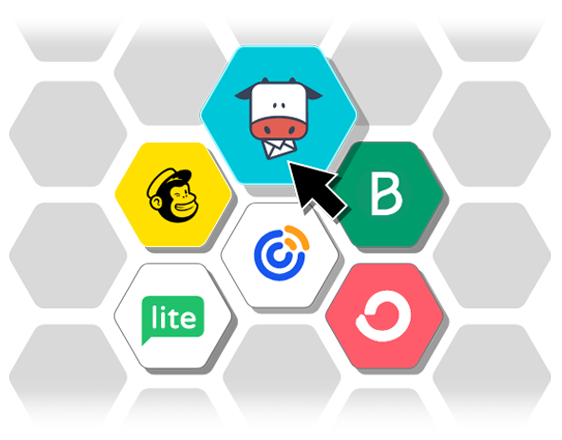
Save $$$ of your marketing budget by switching to Moosend today!
Campaign Monitor Overview & Ratings
Campaign Monitor is an email marketing platform that offers easy-to-use tools for designing and sending beautiful email campaigns. The platform is known for its intuitive user interface, allowing even beginners in email marketing to get started quickly.
You get a range of features to reach, grow, and engage your audience, including personalization and segmentation options, signup forms, transactional emails, and, most recently, SMS marketing (for the US). Campaign Monitor also provides in-depth analytics that can help you refine your marketing efforts.
Pricing is where things get more complicated, as the platform doesn’t have the cheapest plans on the market. Nevertheless, it isn’t the most expensive tool out there. The real question, though, is whether each tier’s limitations can hinder your business’s growth or not.
Before exploring each feature in more detail, let’s take a brief look at the platform’s main aspects.
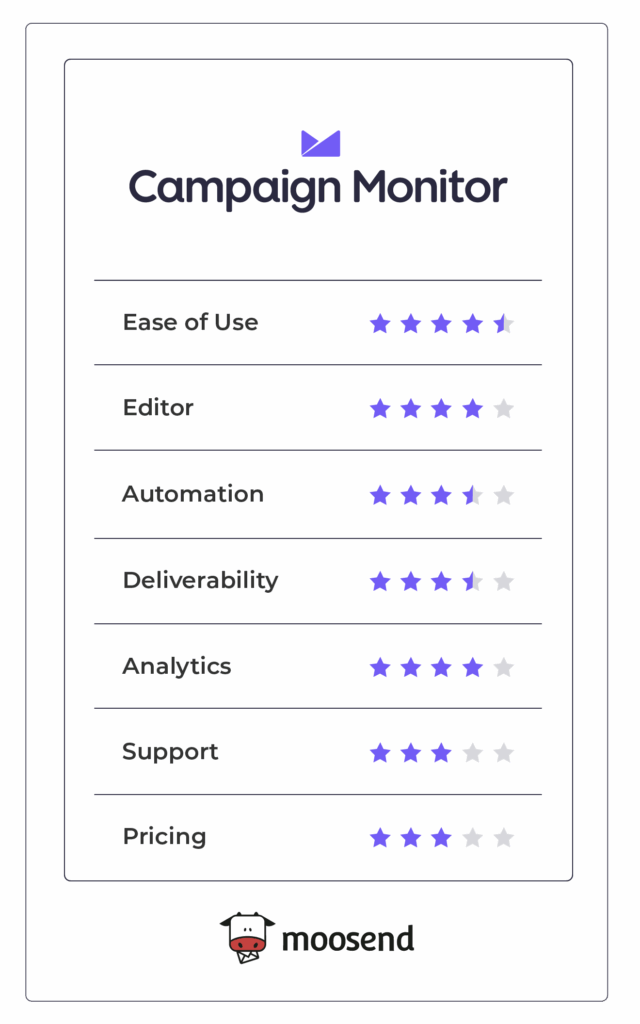
Campaign Monitor Feature Breakdown
In this section, we’ll explore Campaign Monitor’s main features and their pros and cons, so you can decide whether the platform fits your business needs.
Email Builder
To create email campaigns, Campaign Monitor gives you three options: use a pre-made template, import custom HTML code, or create a plain text email. I selected the “Use a template” option and found a library of well-designed templates and four email layouts (welcome, announcement, newsletter, and updates).
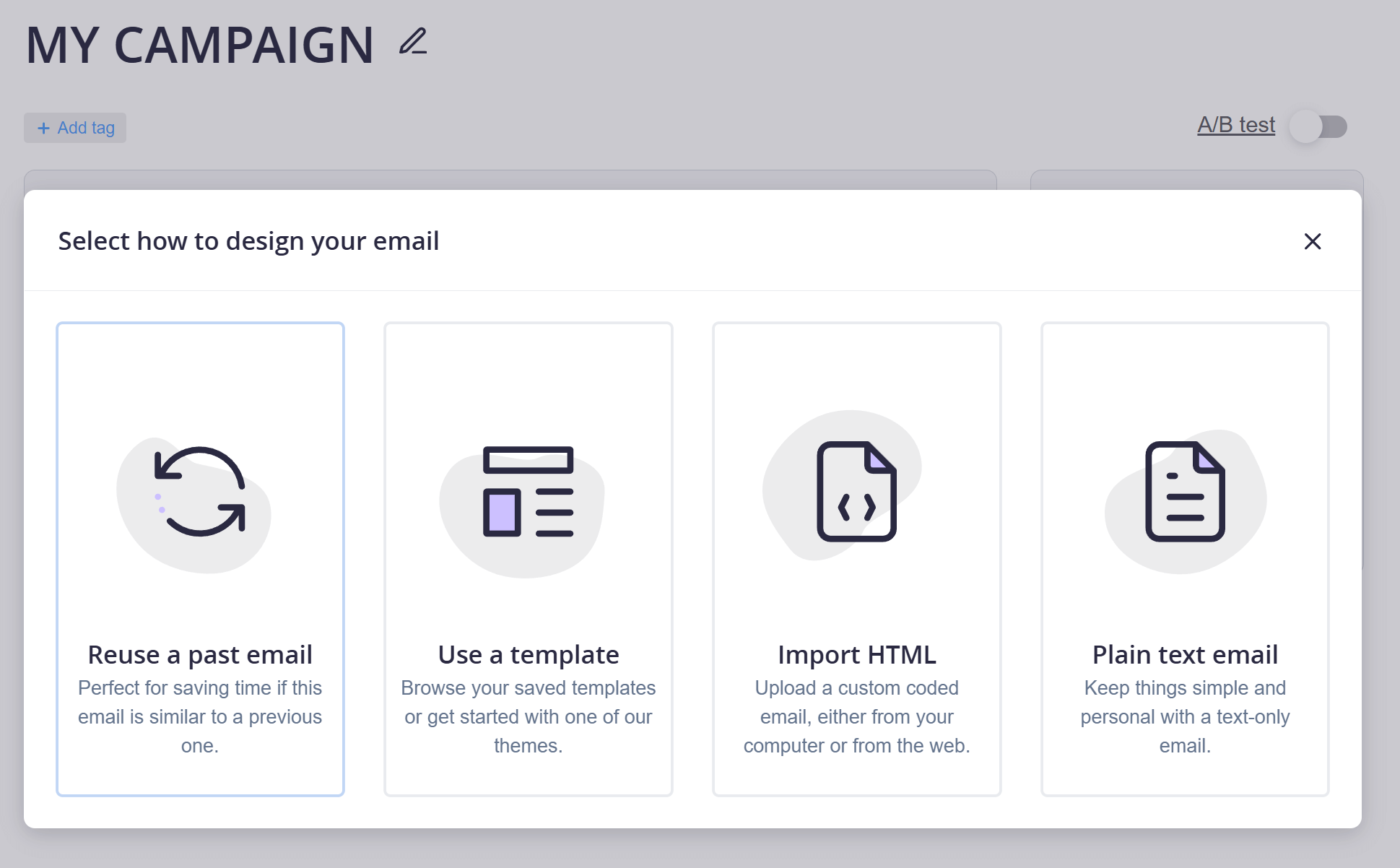
The editor itself is among the most user-friendly I’ve encountered while testing the best email marketing software. I really liked that it’s clean, letting you navigate all the available options with ease. I did notice, however, that Campaign Monitor’s builder isn’t the snappiest out there.
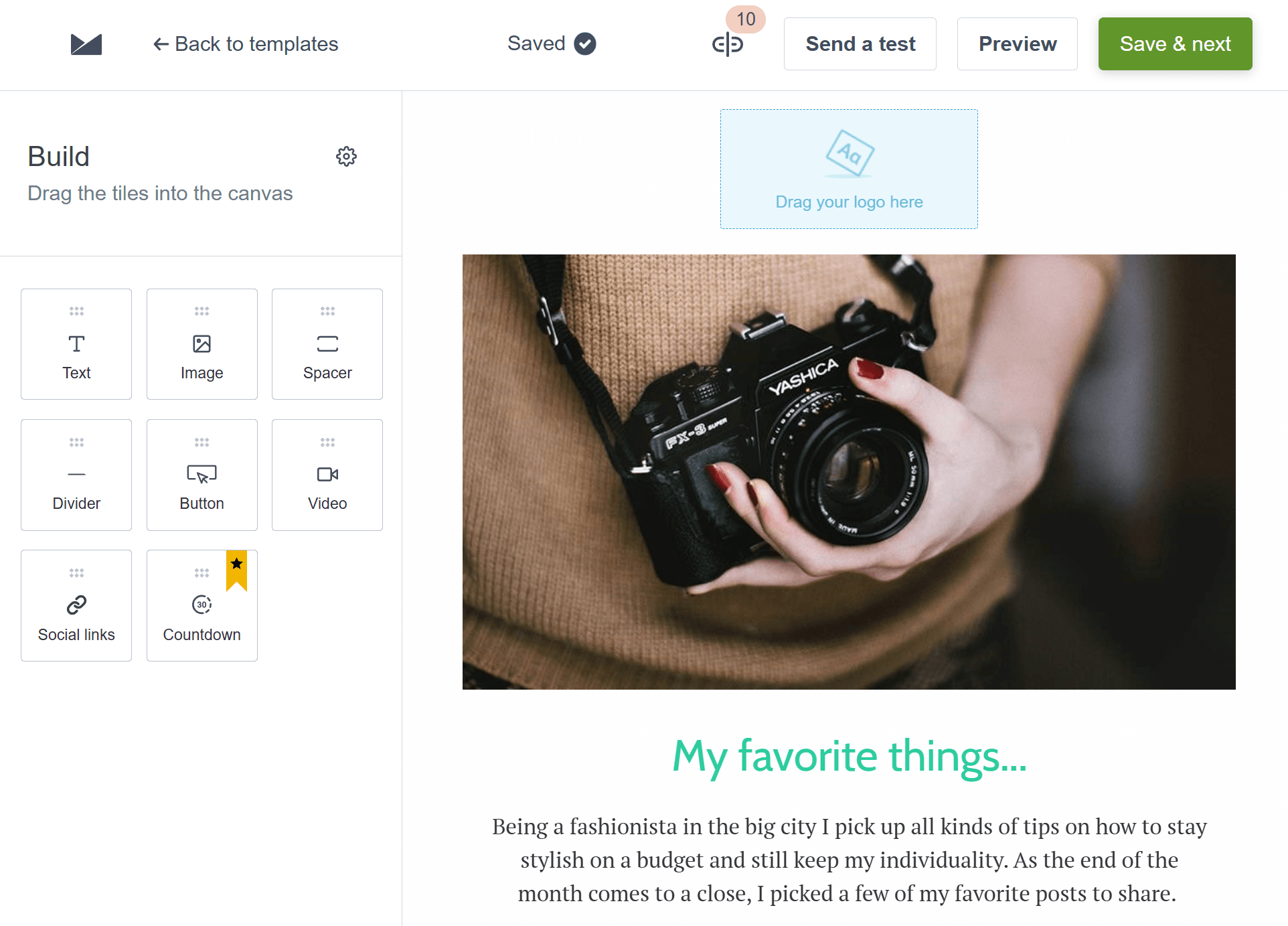
You can insert various items into your campaigns, such as images, CTA buttons, videos, social links, and countdown timers. The editor also includes free built-in stock images from Pexels. At the same time, you can easily tweak colors, fonts, and layouts to match your branding. This is especially useful to keep things consistent across newsletters.
While the builder covers all the essentials, it doesn’t feel as flexible if you want to go beyond the standard blocks. For example, adding highly customized sections or coding directly in the editor isn’t as smooth as with some other tools. Nevertheless, for most marketers, this may not be that big of an issue.
Another handy feature of the email builder is the ability to review links. This tool identifies broken or invalid links and helps you fix them. You can also preview how your campaign will look on desktop and mobile devices before actually sending it.
Regarding A/B testing, the platform lets you test email subject lines, sender names, or email design. We found out that you can only set up A/B tests for two email variations.
Finally, Campaign Monitor offers Inbox Tests that allow you to view how your emails display across 30+ email clients. This feature is available on the popular Essentials plan, and it’s a nice addition, as not many ESPs offer it.
Email Template Library
Campaign Monitor’s email builder comes with a great email template library. We found 132 templates for various purposes, including announcements, deals, events, customer re-engagement, and transactional emails.
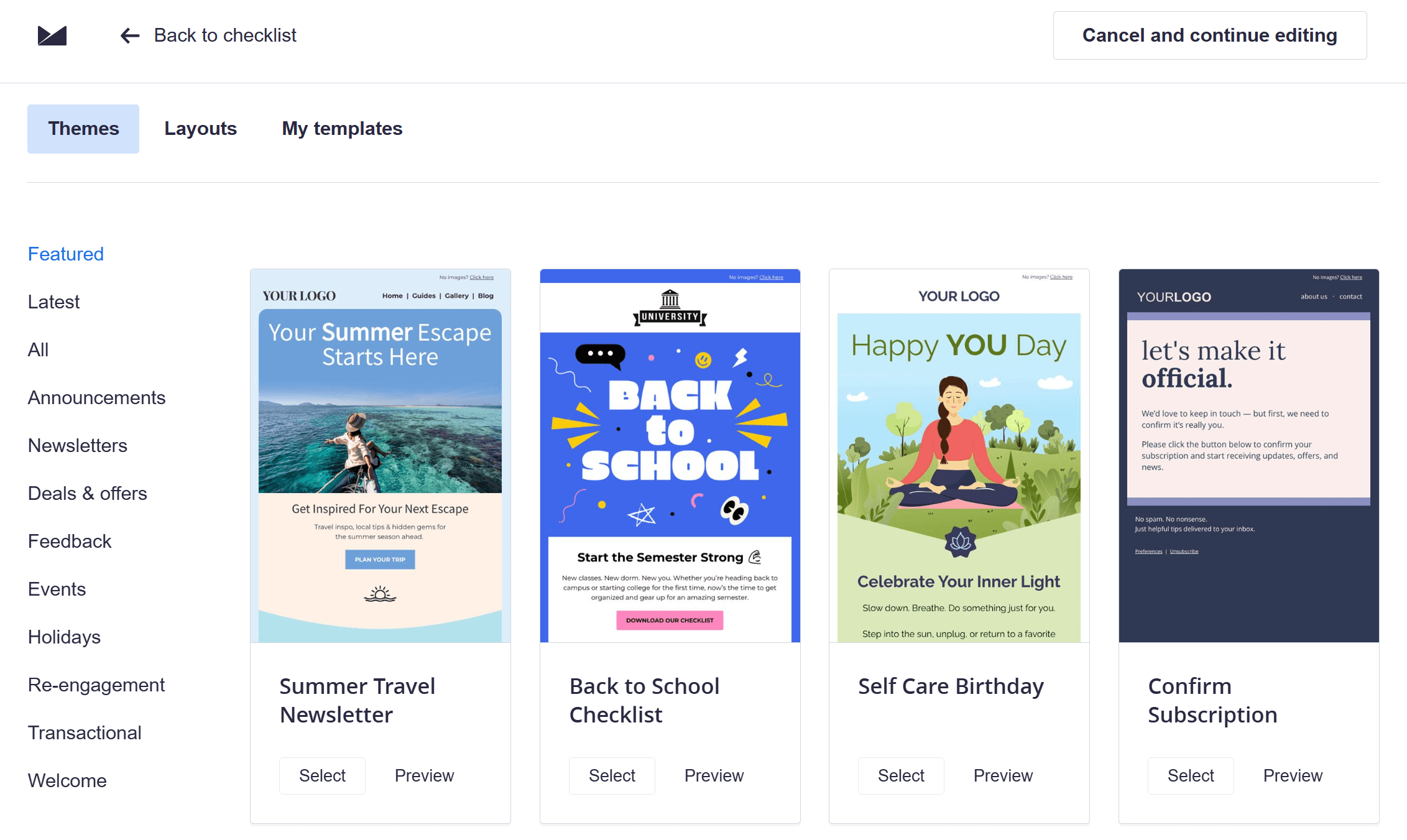 What’s great about these templates is that they are modern and aesthetically pleasing, while also being responsive. This means that they’ll automatically display correctly on any device.
What’s great about these templates is that they are modern and aesthetically pleasing, while also being responsive. This means that they’ll automatically display correctly on any device.
Access to the template library is available even for users of the 30-day free trial.
Automations
Digging into Campaign Monitor’s automation features, I found them solid but not overwhelming. You can set up customer journeys that trigger based on actions like joining a list, clicking a link, entering/exiting a segment, and making a purchase. I tested a simple welcome series, and it was easy to map out the steps without needing a separate tutorial.
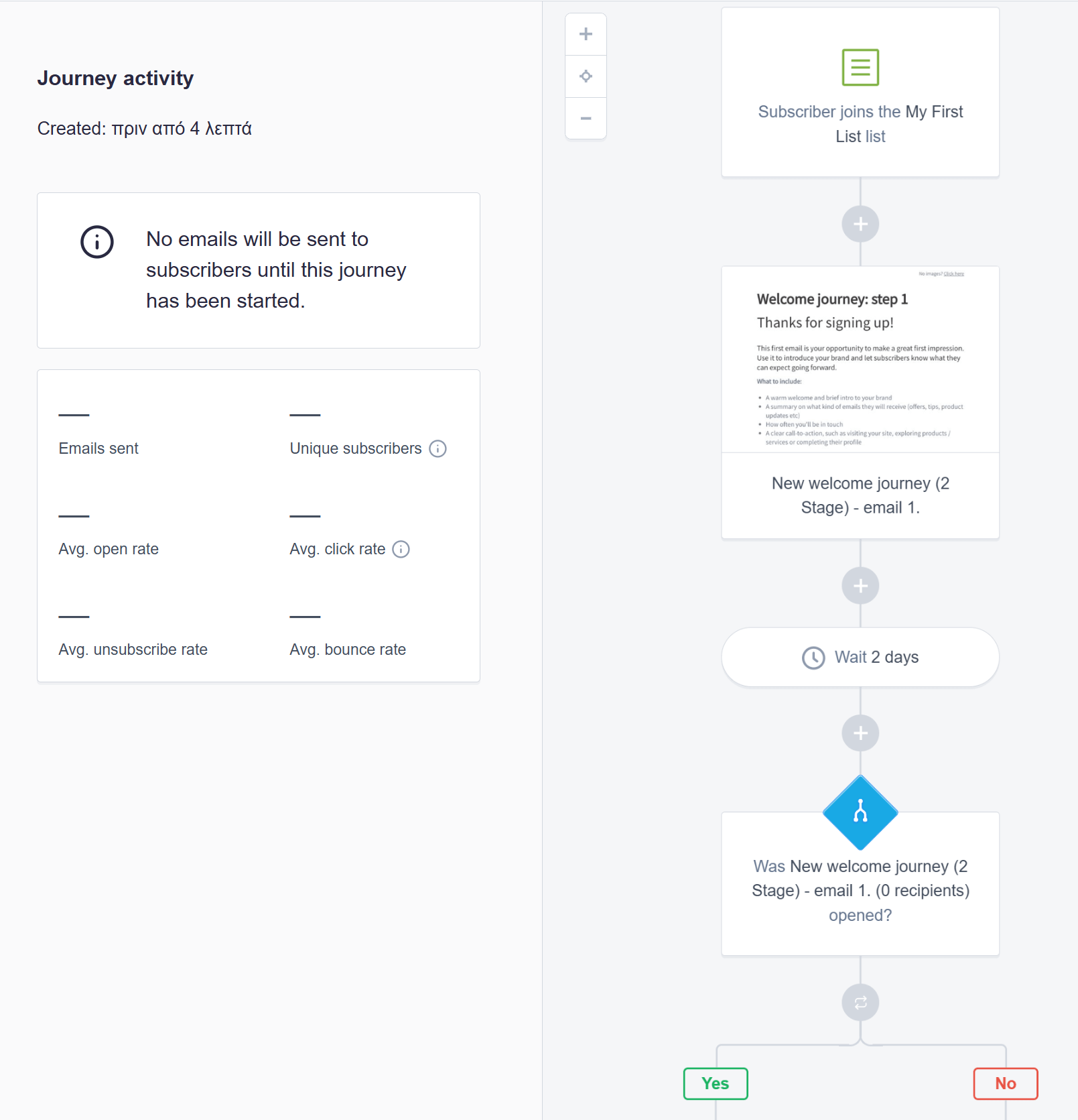
What I really liked is that you can branch out with conditional paths. For example, if someone opens your email but doesn’t click through, you can send them a follow-up nudge. This enables the creation of more personalized flows without requiring advanced technical knowledge.
However, I did notice that the automation options aren’t as extensive as those offered by some competitors. You won’t find advanced triggers like website behavior tracking or complex multi-channel workflows. Also, I found myself wishing for more flexibility when trying to set up a re-engagement series with multiple touchpoints.
The platform also offers 9 pre-built automation journeys, ideal for beginners and users who need to set up key automations without spending much time. What’s more, the built-in workflow analytics provide insights that can help you improve underperforming emails.
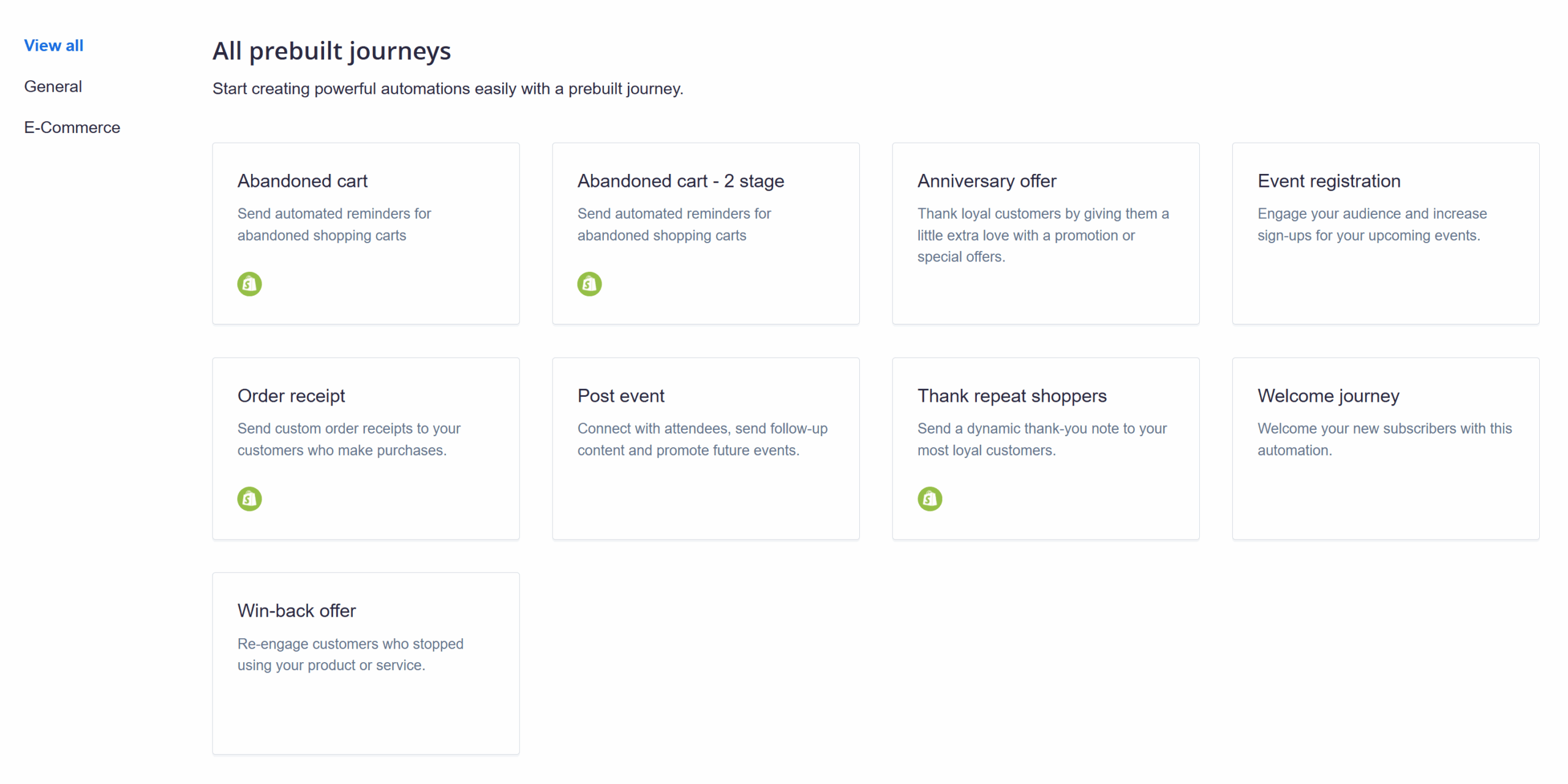
Overall, if your goal is to run welcome emails, post-purchase follow-ups, or basic nurture campaigns, Campaign Monitor gets the job done. It strikes a balance between simplicity and functionality, which makes it a good fit for teams that want to use automation without spending weeks learning the ropes. For complex journeys or advanced triggers, however, you may need to consider other options.
Segmentation (List Management)
Upon exploring Campaign Monitor’s segmentation features, I found them to be one of the strongest aspects of the platform. You can create segments based on subscriber data like location and engagement history, as well as behavioral patterns.
I really liked how simple it was to build a segment using drop-down conditions, without overly complicated filters.
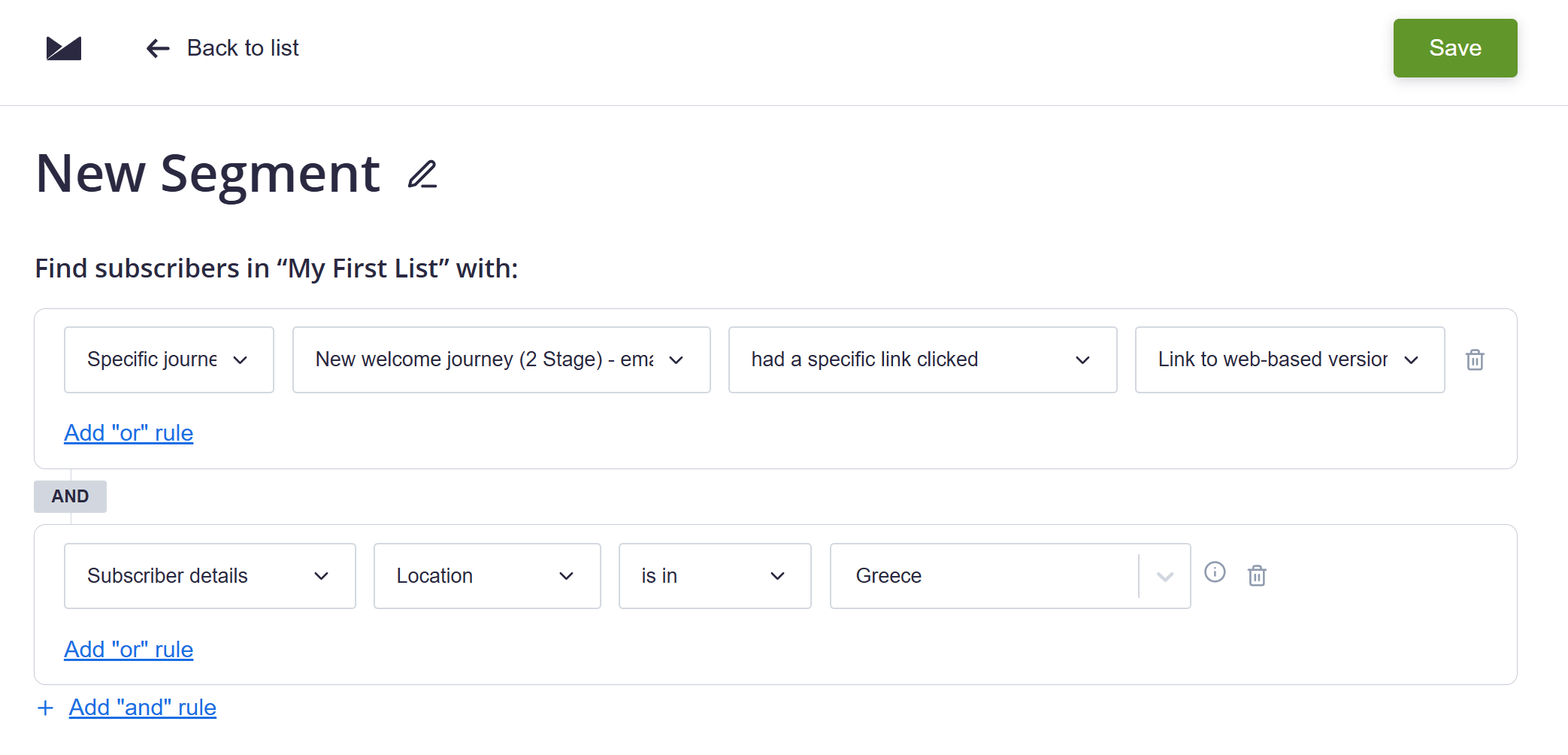
For example, I created a test segment of subscribers who had opened at least one campaign in the last 30 days but hadn’t clicked a link. It only took a few clicks to set up, and it gave me a ready-made list to re-engage. This is especially useful when you want to tailor content to people who are interested but not fully converting.
Another highlight is dynamic segmentation. Once a subscriber meets (or no longer meets) the criteria, they’re automatically added or removed. I found this really useful because it saves you from having to constantly update lists manually. Also, unlike other platforms, Campaign Monitor lets you deliver emails to multiple segments or lists at once.
That said, while the basics are well-covered, advanced segmentation features (such as predictive audiences or AI-driven insights) are not yet part of Campaign Monitor’s toolkit. Still, for most small to medium businesses, the segmentation tools are more than enough to run personalized and effective campaigns.
Forms & Landing Pages
For lead generation, Campaign Monitor offers embedded forms, pop-ups, and signup landing pages.
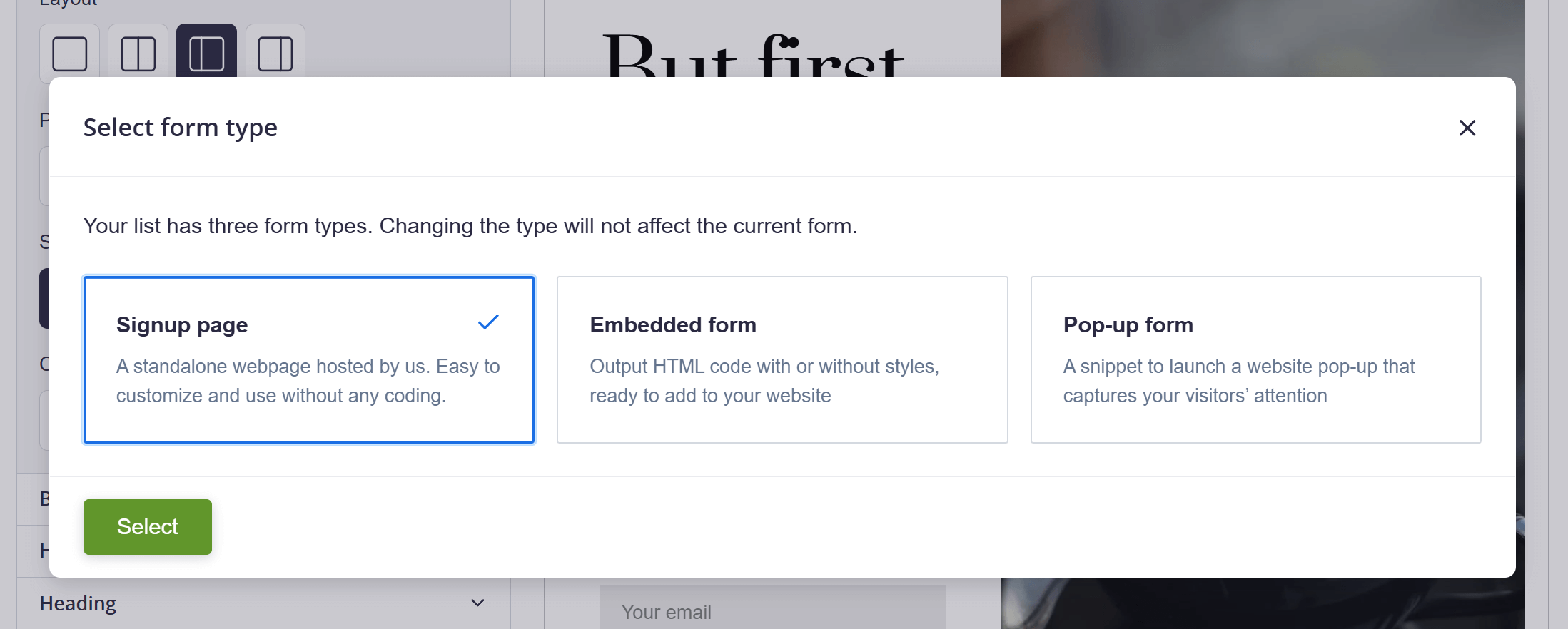
During my review, the forms were easy to set up, but they were a bit basic. You can either embed a form directly on your website or use a hosted signup page, which Campaign Monitor provides if you don’t have a place to publish your form yourself. You can adjust colors and add custom fields, making it possible to collect more than just names and emails.
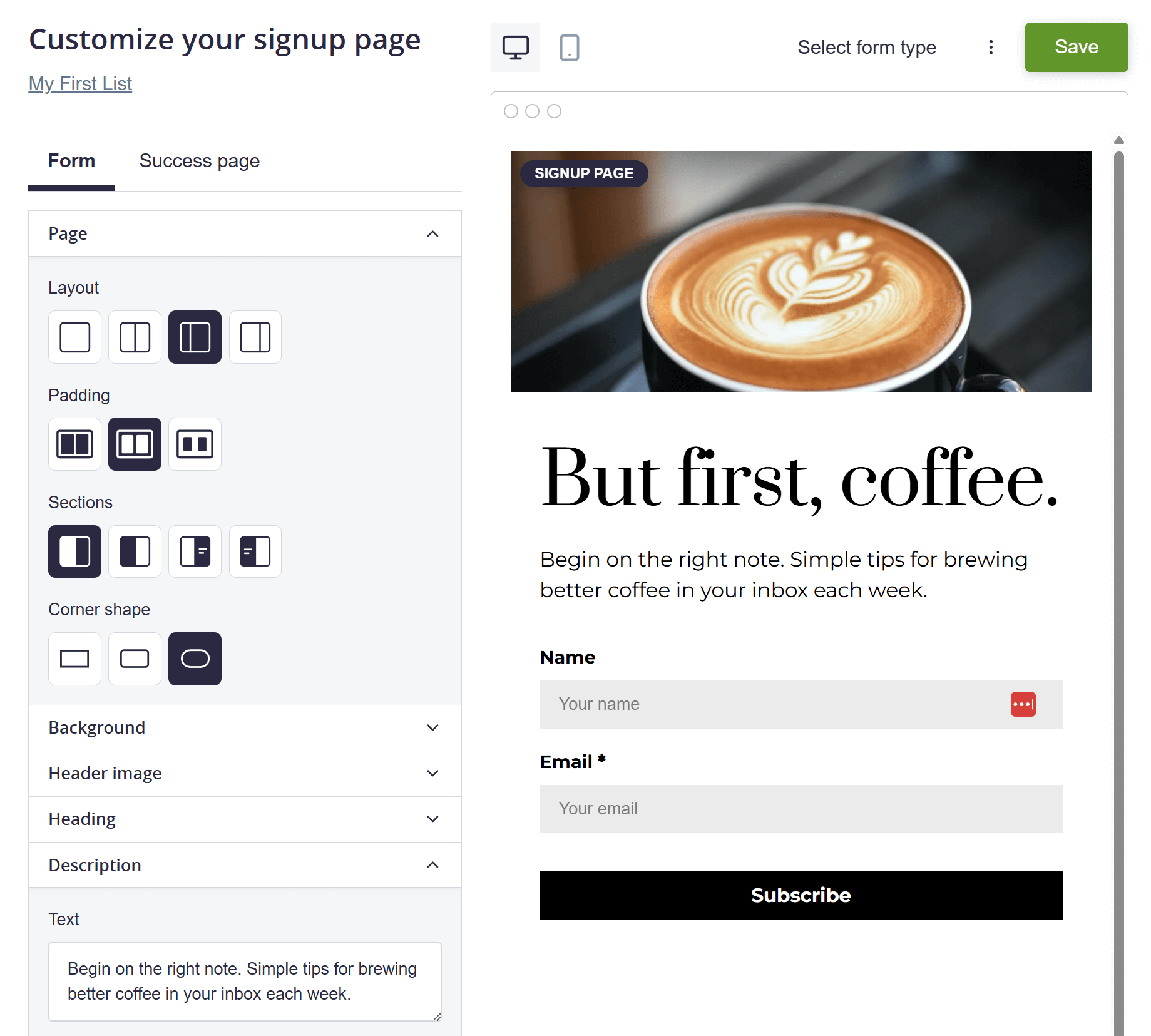
The available form templates are great and will cover most businesses. To use most of them, though, you’ll need a paid plan.
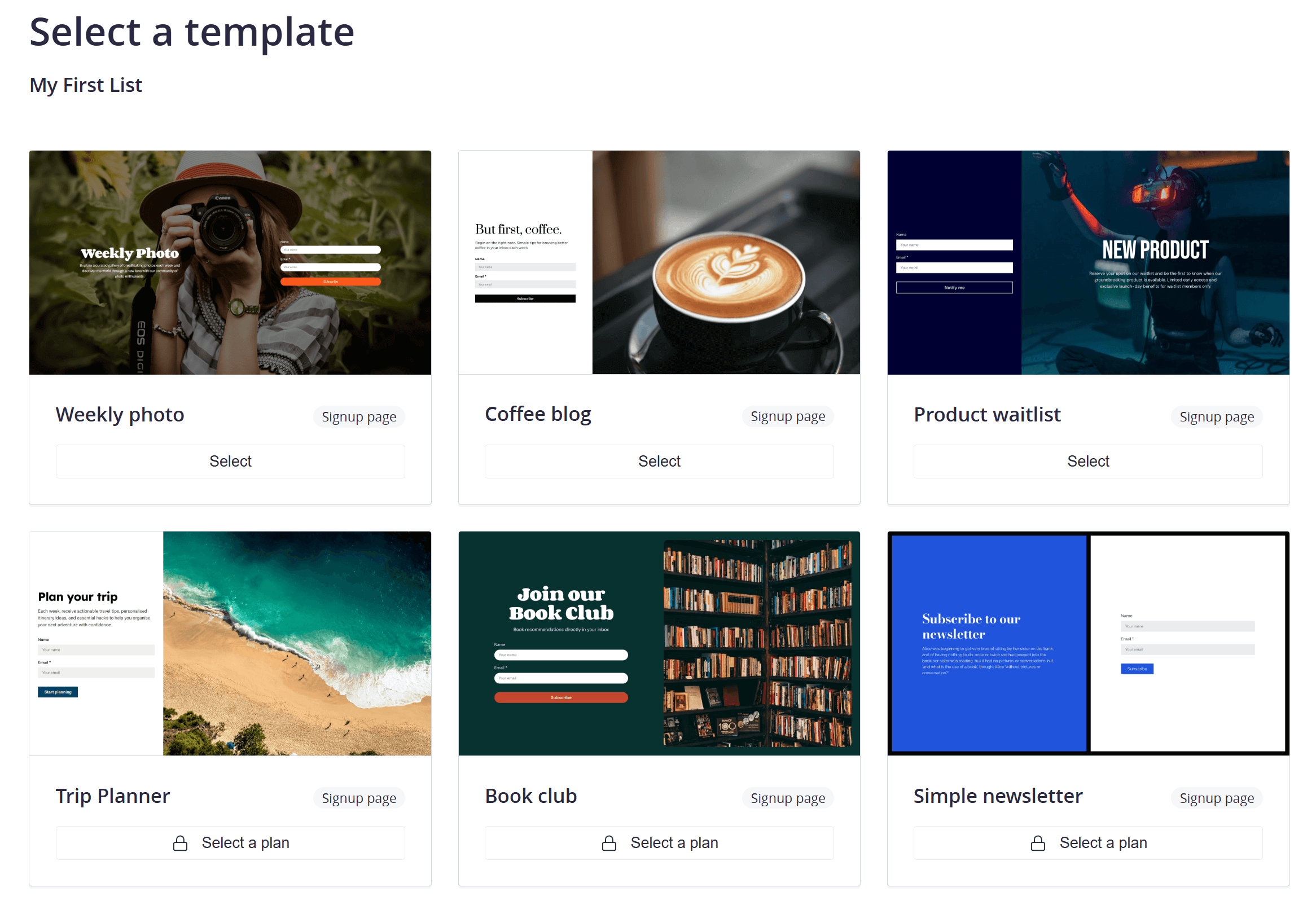
The hosted signup landing pages are helpful when you want a quick way to collect signups for a newsletter without touching your site’s backend. They’re clean, responsive, and functional, but they’re not full landing pages. You don’t get drag-and-drop layouts, advanced design elements, or items like countdown timers or product blocks.
What I really liked was that forms connect seamlessly with your lists, and any custom fields you add flow directly into segmentation.
Reporting & Analytics
Moving on to reporting and analytics (called Insights in the platform), I found a clean dashboard displaying key metrics, including opens, clicks, bounces, unsubscribes, and delivery rate. I was impressed with how easily I could see engagement trends at a glance without having to dig through menus.
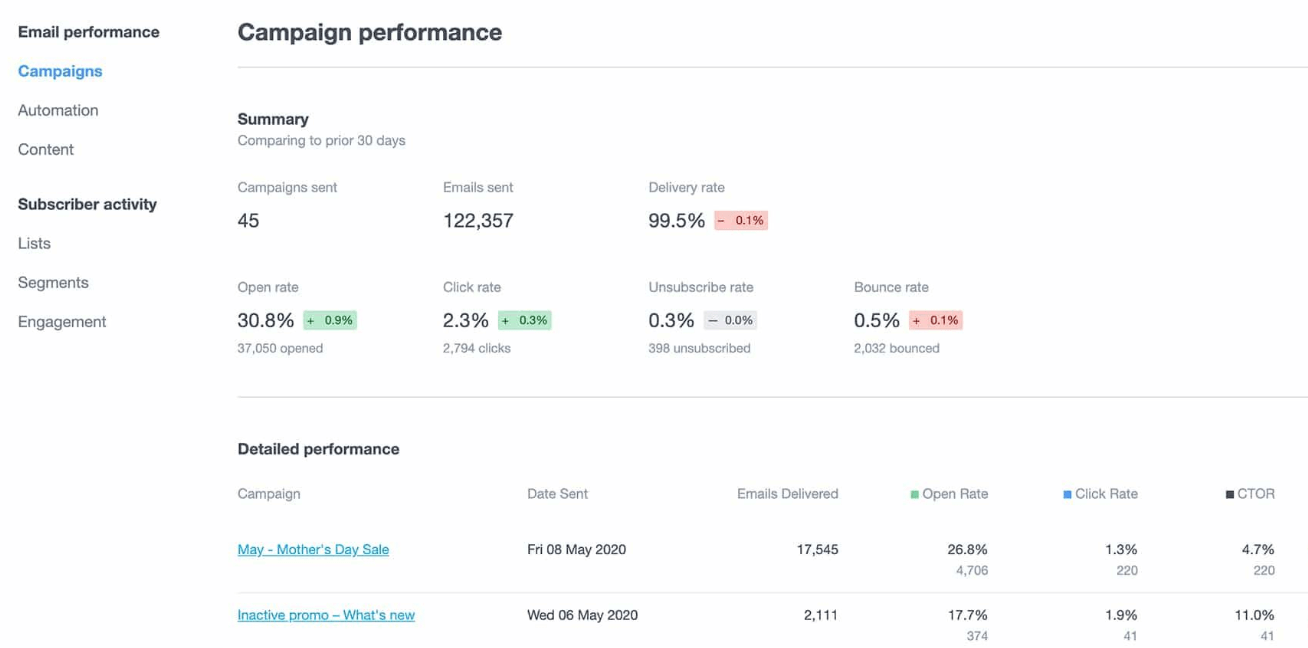
You get distinct categories to see your email performance for campaigns, automation sequences, and content. I also liked the fact that the platform compares your performance with the previous 30 days, showing changes in a way that’s easy to grasp.
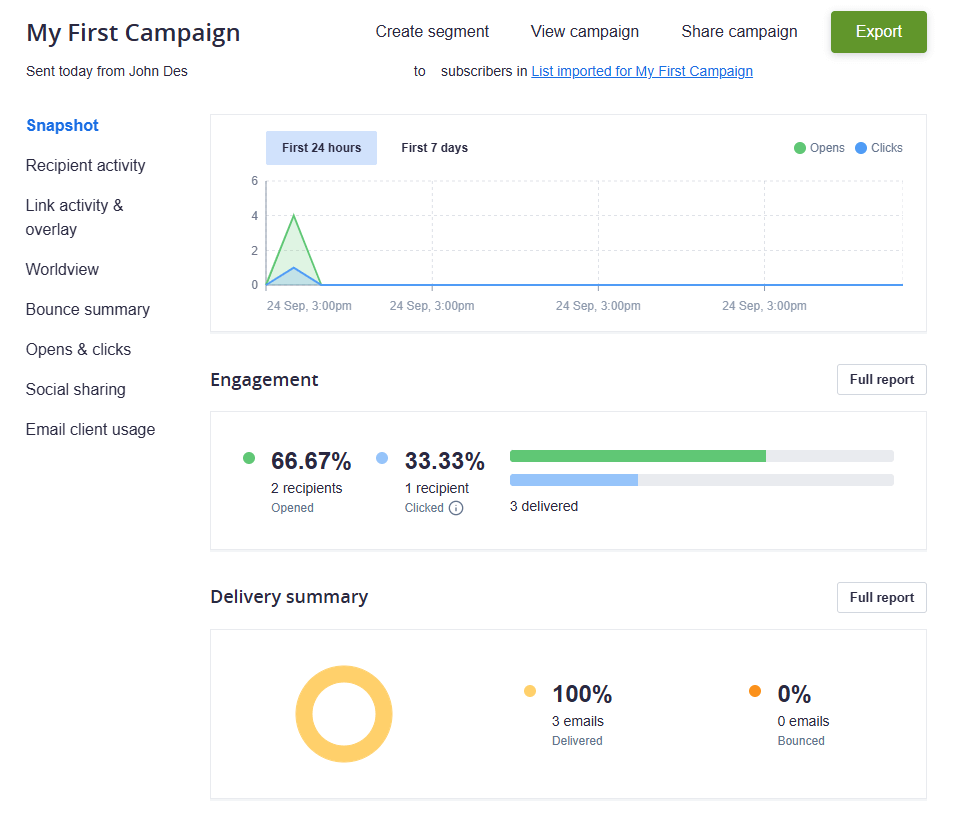
Clicking on each campaign allows you to access more in-depth details. For example, you can track performance by geographical location, device, or even the email client your subscribers are using.
Another useful feature is the “click maps,” which visually show where people interacted with your email. It’s a simple way to understand what’s working in your design without paying for dedicated tools.
What’s not ideal is that dashboards aren’t customizable, and advanced link tracking is only available on the top-tier plan. Finally, I noticed that the platform lacks more advanced analytics, like predictive analytics and robust conversion tracking.
Integrations
To connect with other tools you may be using, Campaign Monitor has 109 integrations in its library.
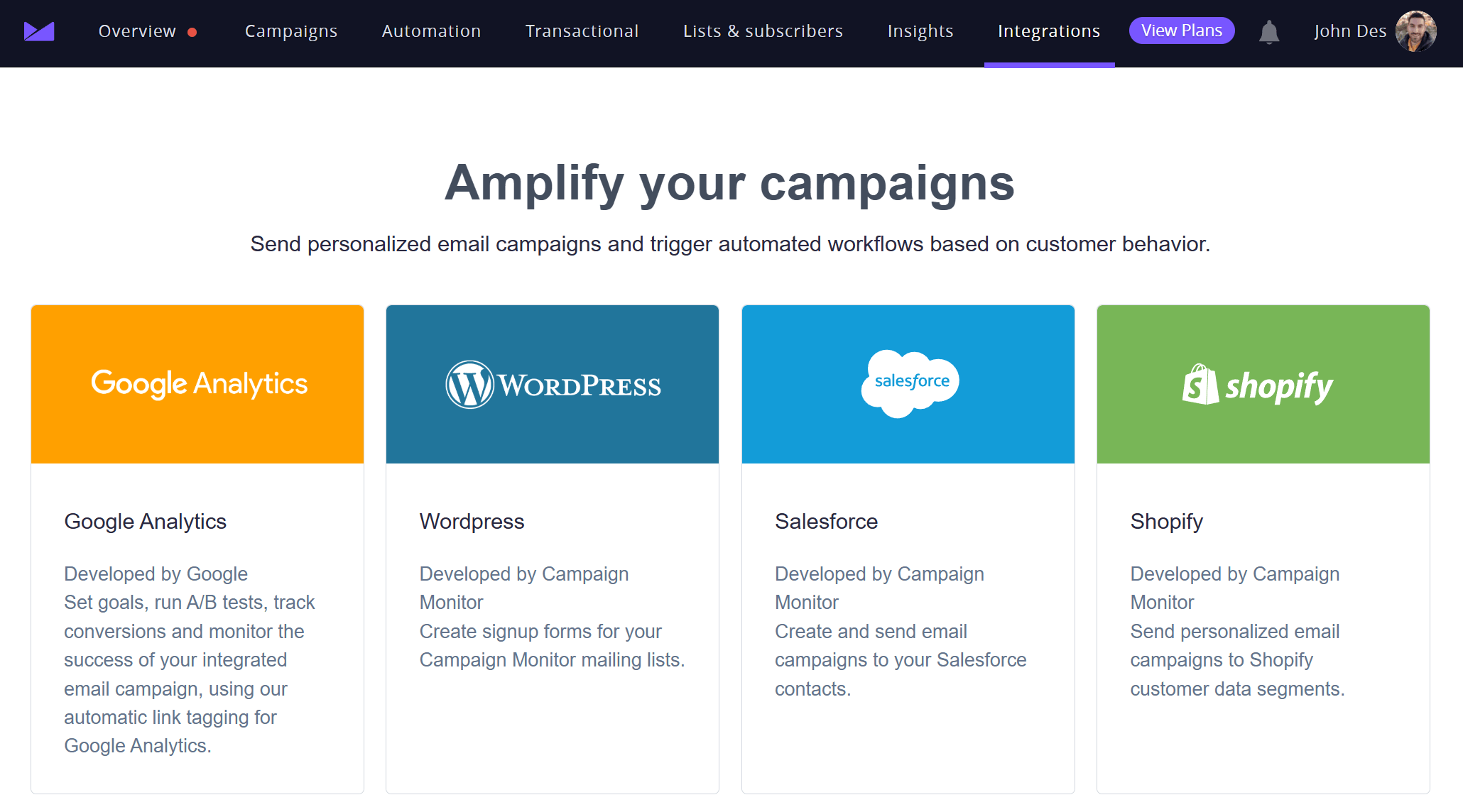 These integrations cover CRM software, lead generation platforms, email testing tools, survey tools, and more. However, we noticed that some essential integrations are missing (e.g., with social media tools like Instagram and CMS platforms).
These integrations cover CRM software, lead generation platforms, email testing tools, survey tools, and more. However, we noticed that some essential integrations are missing (e.g., with social media tools like Instagram and CMS platforms).
Nevertheless, the integrations offered are built well, allowing data to flow smoothly between platforms.
Customer Support
When it comes to customer support, your options are a little different than usual. The main difference from other email marketing services is the lack of a “direct” support channel, meaning that there is no live chat.
For assistance, a chatbot is available to provide quick answers to your queries or direct you to the support team, available either via email or phone (depending on your plan). For example, the Essentials plan gives you access to priority support, while only the most expensive Premier plan provides access to phone support.
Based on my experience during the review and what other users have noticed, responses from the email support team are quick, but they still lack the directness of live chat. I should also mention that support is offered primarily during office hours, Monday through Friday.
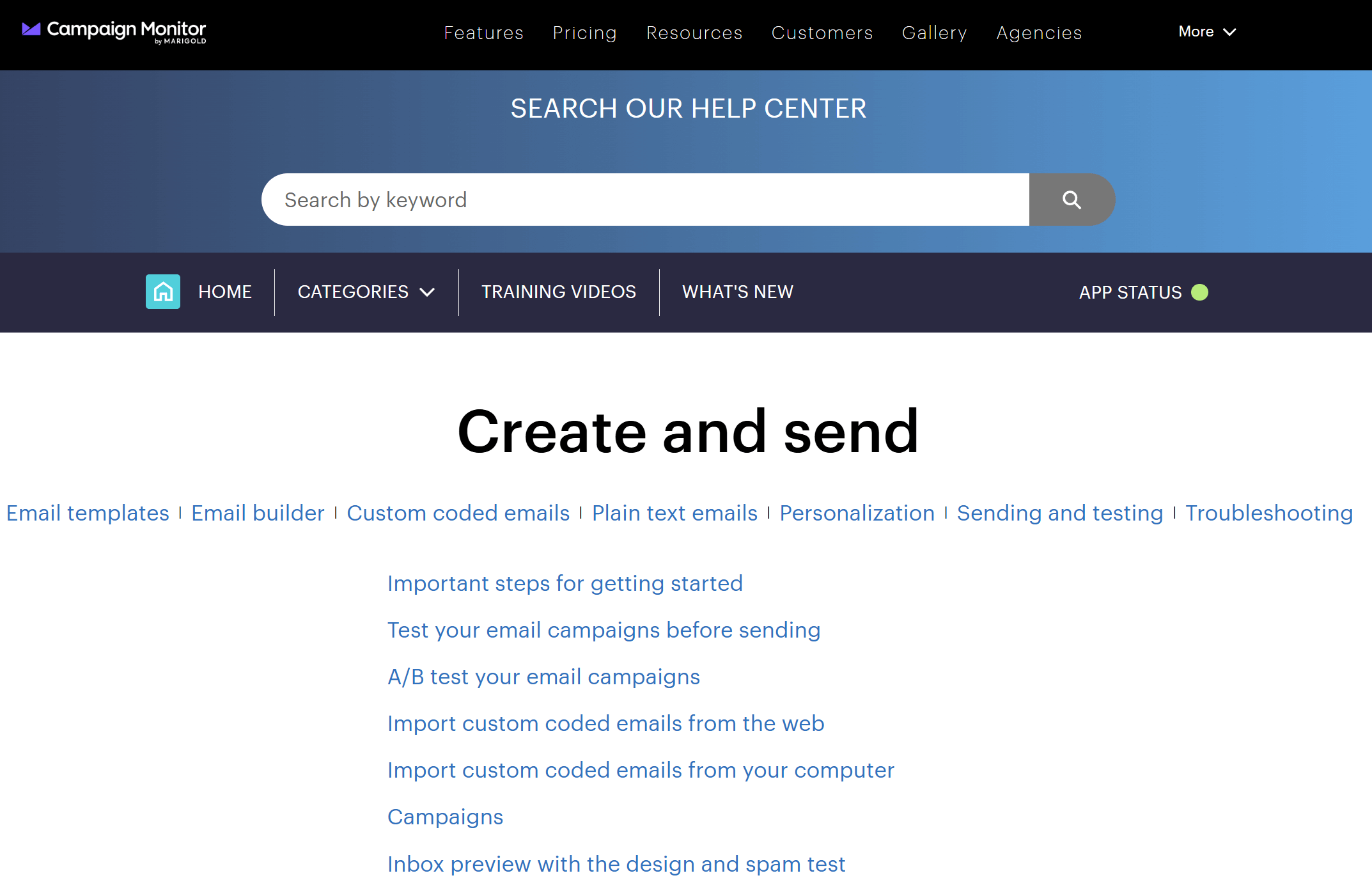
Apart from the above channels, Campaign Monitor has a great Help Center where you can find solutions to common pain points.
Email Deliverability
Email deliverability is essential so that your email campaigns successfully reach subscribers’ inboxes and not the spam folder.
Below you can see an email deliverability report comparing Campaign Monitor with other popular email marketing services.
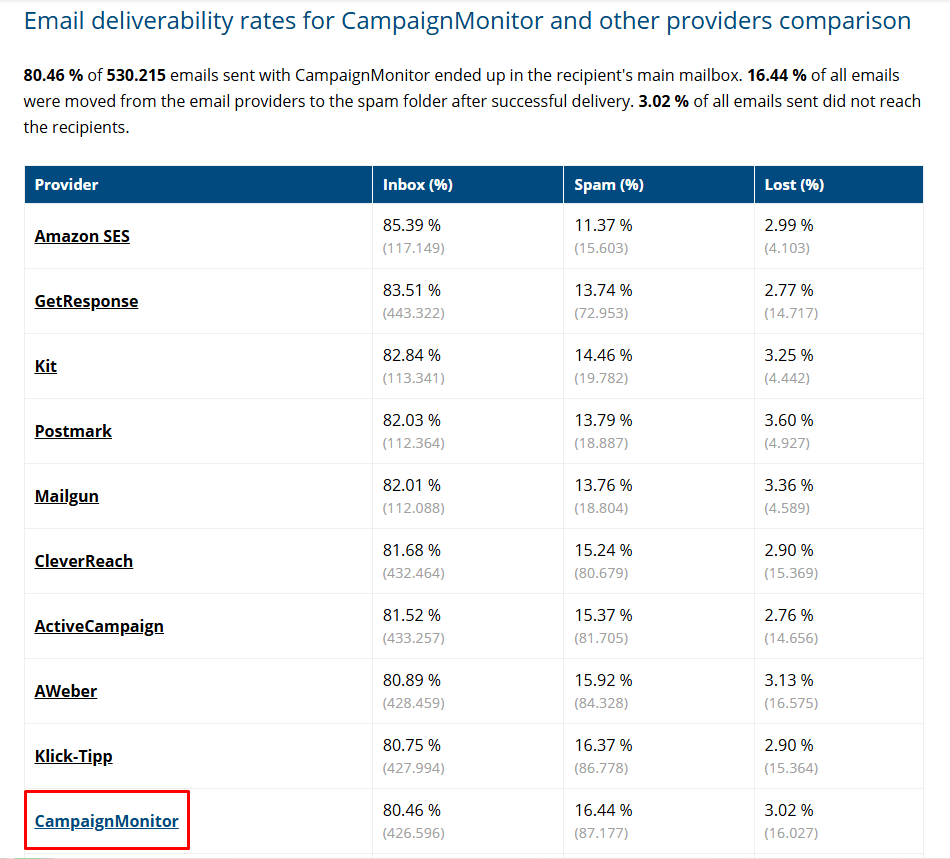
This table shows that with Campaign Monitor, most of your emails will reach inboxes; however, you may see a slightly higher rate of messages ending up in spam compared to top performers. List hygiene and authentication (SPF, DKIM, DMARC) also play a big role here. Setting those up properly will likely improve your results.
The good news is that Campaign Monitor has a solid sender reputation and provides clear instructions for domain authentication. Overall, its deliverability is decent, but not exceptional.
Campaign Monitor Pricing
In the previous sections, we explored Campaign Monitor’s features. Now, we’ll review its pricing to see whether it’s worth it.
The platform’s pricing consists of a 30-day free trial and three paid plans. You pay based on the number of contacts you want to have. What’s more, committing to an annual contract gets you a 10% discount.
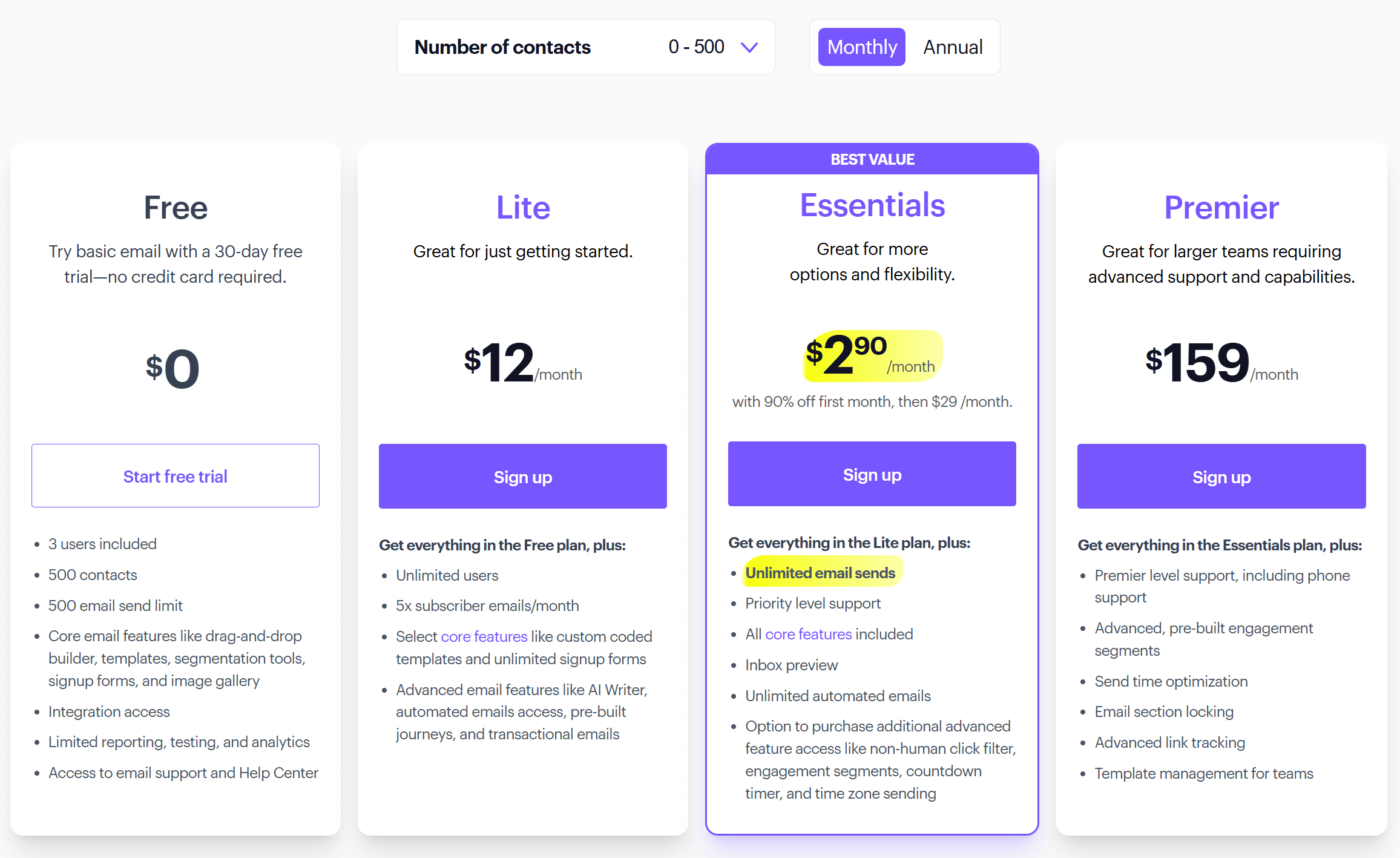
Let’s review each plan individually now.
Free Trial (30 days)
The platform offers a 30-day free trial that lets you start email marketing without a credit card. This trial lets you have up to 500 contacts and send 500 email campaigns (for the duration of the trial).
You get core functionality like access to email templates, segmentation, and signup forms. However, this plan has serious limitations and is intended only as a starting point to familiarize yourself with the platform before committing to a paid plan.
Lite Plan – $12/month
The Lite plan starts at $12/month for up to 500 contacts, giving you access to key features like email templates, signup forms, segmentation, A/B testing, automation, and the AI Writer.
This plan limits the number of emails you can send (5x your contact limit). Also, you get standard email customer support.
Essentials Plan – $29/month
The Essentials plan offers more advanced functionality and upgrades your email sending to unlimited emails per month. You gain access to all core features, priority support, and inbox previews. Additionally, you can purchase advanced features, such as engagement segments and a non-human click filter.
Premier Plan – $159/month
For larger teams or businesses requiring access to phone support, there is the top-tier Premier plan, which starts at $159/month. You get premier support along with phone support, advanced engagement segments, email section locking, and send time optimization.
This plan incorporates Campaign Monitor’s most advanced functionality, with the only downside being the steep price tag, which makes it unsuitable for small businesses.
Campaign Monitor Pros & Cons
In this section, we’ll recap the main pros and cons of Campaign Monitor, so you can decide whether the platform is an ideal fit for your business needs.
Campaign Monitor Pros
- User-friendly interface: Clean and intuitive UI that makes it easy for beginners to create and send campaigns, and also explore the platform’s features.
- Detailed analytics: Clear dashboards with advanced insights like geo-tracking, device reports, and click maps.
- Solid segmentation: Dynamic lists and easy condition-based filtering to target specific subscriber groups.
- Intuitive email builder: Polished templates and a smooth drag-and-drop editor for professional-looking campaigns.
- Agency features: White-labeling and multi-client account management options for agencies or freelancers.
Campaign Monitor Cons
- Lack of direct customer support: The platform doesn’t offer live chat. Instead, you only get email support and phone support (on the Premier plan). This means that wait times may be longer than those of other ESPs.
- No landing page builder: Only basic hosted signup pages are available, with no actual landing page functionality.
- Limited automation depth: Automation journeys cover common scenarios, but advanced triggers and multi-channel workflows are missing.
- Expensive platform: Paid plans start at a higher price than the competition, and to access more advanced yet crucial features, you’re directed to the “premium” plans.
- Deliverability performance: Inbox placement is decent but lower compared to some top competitors.
Campaign Monitor Alternatives
While Campaign Monitor is a polished tool with a user-friendly interface and strong analytics, its drawbacks, such as limited automation depth, the lack of a dedicated landing page builder, and above-average pricing, might leave some businesses looking elsewhere.
Based on the above, we researched the market to find the top three alternatives you need to consider.
- Moosend: An affordable option that includes a modern email builder, advanced automation workflows with a vast range of triggers, built-in landing page and form builders, and unlimited emails even on lower-tier plans. It’s ideal for small to mid-sized businesses that want advanced functionality without breaking the bank or facing a steep learning curve.
- Mailchimp: One of the most popular email marketing platforms, offering a broader set of features for a similar price range as Campaign Monitor. With Mailchimp, you get extras like a robust landing page builder, 300+ integrations, and a larger library of templates, which can make it feel like you’re getting more value for your money.
- GetResponse: A platform known for its powerful automation features and multi-channel marketing options, including webinars, SMS, and web push notifications. Another great aspect of the tool is its pre-built conversion funnels, which let you sell products, recover abandoned orders, and convert more customers.
The Verdict: Is Campaign Monitor Worth Committing To?
As we saw in this Campaign Monitor review, the platform’s key appeal lies in its intuitiveness, extensive email template library, and solid segmentation options. Campaign Monitor is also extremely easy to navigate and master all of its features without frustration.
The main pain point we identified is the high pricing for what it delivers, considering what other direct competitors offer. For example, you don’t get any advanced A/B testing options, spam or design testing in lower-tier plans, or a dedicated landing page builder. This is probably the main reason to consider other alternatives before fully committing to it.
Nevertheless, the platform’s functionality is decent and works without problems.Try Campaign Monitor
Frequently Asked Questions
Here are some frequently asked questions about Campaign Monitor.
1. Can I use Campaign Monitor for free?
Yes, you can use Campaign Monitor for free through its 30-day free trial. You get access to core email marketing features, and you’re able to store 500 contacts and send 500 emails (100 emails per 24 hours). After that, you need to upgrade to a paid plan.
2. How much does Campaign Monitor cost?
Pricing begins with the Basic plan, which is billed based on the number of subscribers you have. As your list grows, the monthly cost increases. Higher-tier plans unlock features like unlimited sending, advanced automation, and priority support. Overall, it’s mid-range in terms of pricing compared to other email marketing platforms.
3. What are the main limitations of Campaign Monitor?
The biggest drawbacks are the absence of an actual landing page builder, the limited automation options, and the pricing that feels restrictive as your subscriber list grows. Deliverability is decent but not top-tier, while customer support is mainly through email, and phone support is reserved for the most expensive Premier plan.
4. Is Campaign Monitor good for beginners?
Yes, the platform is known for its user-friendly interface and clean email editor. Beginners can design and send campaigns quickly without a steep learning curve. However, businesses that need advanced automation or multi-channel marketing may outgrow it faster.
5. Is Campaign Monitor better for agencies or small businesses?
Campaign Monitor works for both, but it tends to be a stronger fit for agencies. It offers white-label features, client management options, and branded sub-accounts, making it easier for agencies to manage multiple clients from a single dashboard. Small businesses can also use it effectively, but they may find the pricing less flexible compared to tools designed specifically for budget-conscious users.




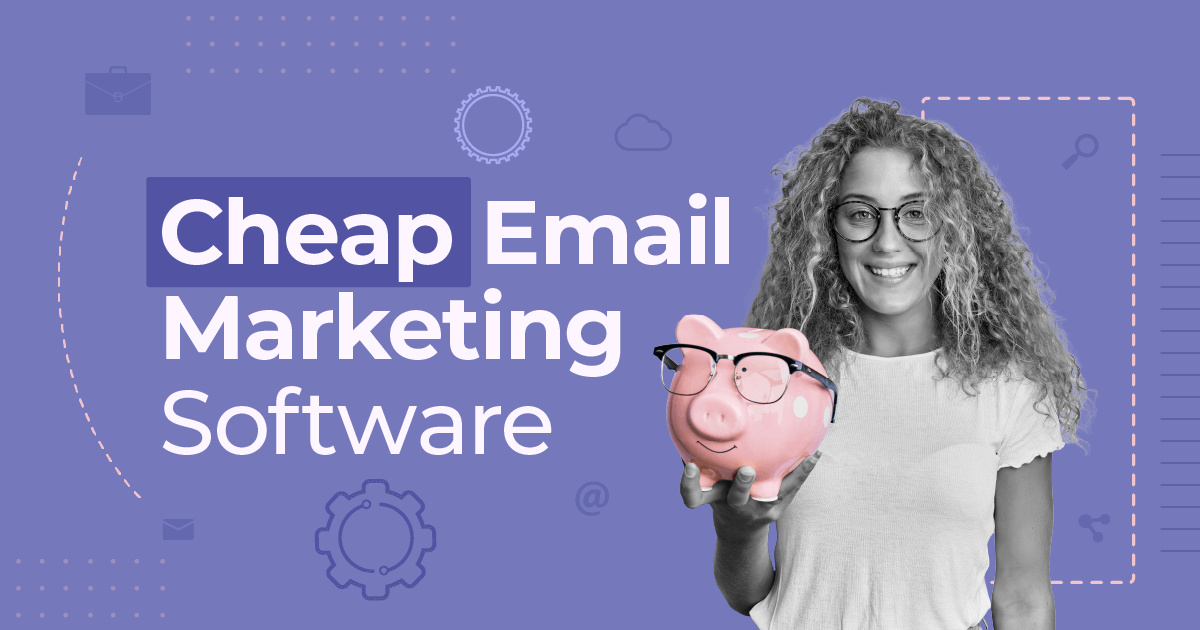
 Published by
Published by

 Published by
Published by